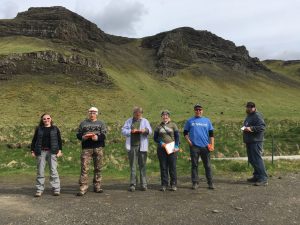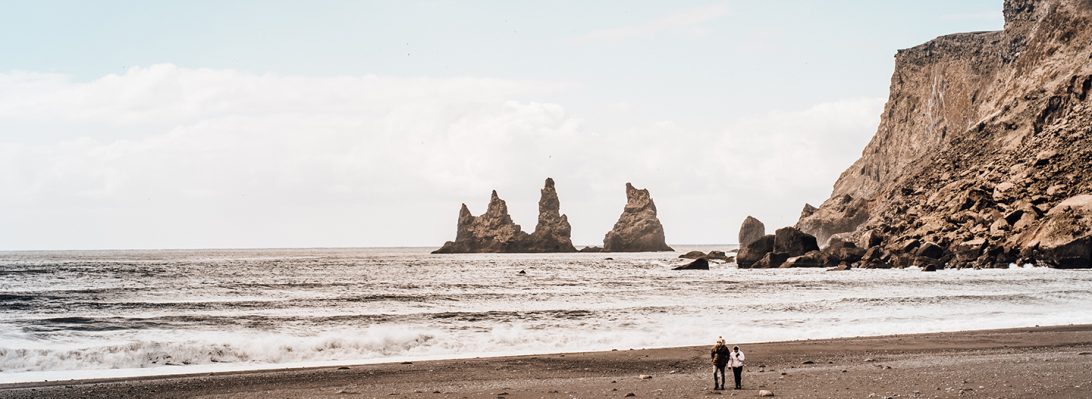The last day of the GEOL 390 field trip to Iceland was to be a long day’s drive back from Akureyri in the north to Reykjavik in the south, a total of 385 km. This was to be through some of the ‘less geologically exciting’ parts of Iceland, but as usual we had some surprises.
The day started well with sun at last and a cool 6-7 C. The bus was loaded and ready for a later departure than usual at 10 am. Fours stops were planned along the route based on our reconnaissance of the road during Day 8.
The first stop was to examine some jagged mountain peaks from the road, that were distinctly different from the table top plateaus of the Tertiary basalts – likely scrapped flat during a number of previous glacial. These jagged peaks corresponded to some rhyolite extrusives on the geology map. However, with the fog low on the mountains and the driver focused on the road the site was completely missed! Something for next time.
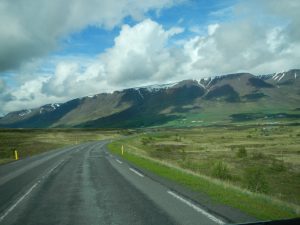
The second stop was to examine a sedimentary lignite layer (a precursor to coal) that is clearly shown on the Iceland geology maps as black lines within the Tertiary basalts. This layers marks a geological unconformity and a period of a warmer climate and vegetation growth. The most likely looking site was a steeper river canyon where we had spotted some red layering previously. We found a good road pullout for a 10 minute stop, which as usual turned into 45 minutes! While the students went off to check out some of the red layering, Tim chatted with some tourists (a drone operator and his wife) to see if they would photograph the layers for us on the other side of the canyon. They did so and promised to send photos later. From some samples that were collected it was deduced that the red laying was a red sandstone marking a distinct period of sediment deposition between volcanic events. No sign of lignite. (A later discussion with a local geologist indicated that this layer was typically very difficult to locate, as it easily erodes away.)
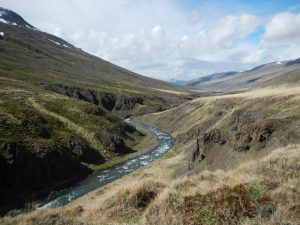
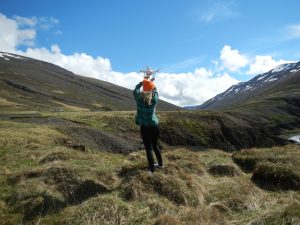
The drive continued south thought some amazing upland valleys, past the ends of fiords and along the edges of large braided rivers. We eventually arrived at the third stop a series of two almost perfect scoria cones with recent basalt lava flows emanating from their craters, both that had been breached. This was a national monument with a well-developed trail system and some excellent explanation boards. ( A distinct contrast to the previous days in Lake Myvatn area, where tourist infrastructure was definitely missing in the mud pools.) The sun was out, the breeze was blowing and the sights amazing – Iceland at its best.
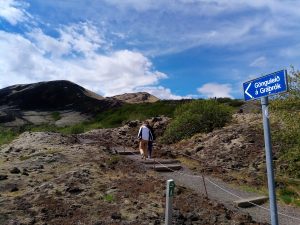
After a quick stop in Borgannes, it was on to the last leg of the journey through the 6 km and 1000 krone ($14) toll tunnel to the last stop – a series of sub vertical dikes in a sequence of Pleistocene lavas. A quick race to the dykes up a steep slope by two volunteers confirmed the composition of dikes as mafic and the surrounding basalts flows with column structures.
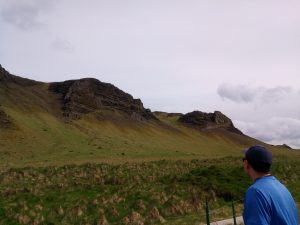
A short drive, before arriving in Reykjavik and the search for the City Hostel located near the Iceland International soccer field, a large camping site and of course the geothermally heated swimming pool. Dinner at the local fish restaurant include: burgers, one whale steak, haddock and shrimp. A night out for some to see the late (or early) 1-5 am nightlife of downtown Reykjavik and a dip in the swimming pool for others.
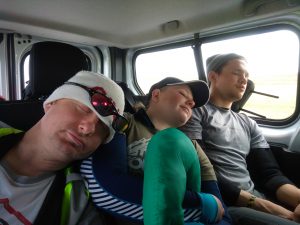
The trip is at an end with some flying out the next day, others staying one more night and one staying in Iceland 10 more days to see more. What a great way to spend 10 days in the field with some of the most active geology in the world. Looking forward to the next visit to Iceland already!
